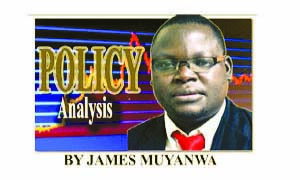AS I was preparing for this article, I thought of how one could describe the one year of the United Party for National Development (UPND) in government and the word that came to mind is thrilling.
The word thrilling means exciting, breathtaking, awe-inspiring, awesome, rousing, exhilarating, stimulating and gripping.
Due to resilience and clarity of thought of the New Dawn administration leaders, the economy has recorded a 180-degree spin in that if it was heading south it is now heading north and vice versa.
In mathematical terms, from moving to the left of the Y-axis on the number-line it has already crossed the Y-axis back on the right side, on the X-axis!
Like I have indicated in the articles in the last two weeks or so, all the economic fundamentals in the last one year look buoyant and, therefore, exciting.
Take, for instance, inflation which we looked last week!
According to Zambia Statistics Agency (ZAMSTATS), in August 2021, when the new leadership took over the government, the inflation dropped to 24.4 per cent.
Exactly 12 months down the lane, last month the inflation had dropped to a single-digit level of 9.9 per cent and at one time it was at 9.7 per cent.
If one was to trace the inflation rate’s journey on its downward trends to the single-digit level since the UPND came into power, one would see that in September 2021, it dropped to 22.6 per cent from 24.4 per cent and so on.
Therefore, since the ushering in of UPND into power the inflation has dropped by 14.7 percentage points, in 12 months.
But what is inflation really?
As the Zambia Institute of Policy Analysis and Research (ZIPAR) once stated, Zambians should know that inflation is not a measure of prices, but a measure of the speed at which prices are changing.
Another important fundamental which has performed in an awe-inspiring manner is the local currency, the Kwacha.
As I indicated a fortnight ago, this is one of economic benchmarks
which positively responded to the declaration of Mr Hakainde Hichilema as Zambia’s president-elect on August 16, 2021.
The dear Kwacha appreciated the most since 2015 while the Eurobonds due in 2024 jumped by almost 10 per cent to 73.56 cents on the dollar in London, the biggest gain then since April 2020 according to Bloomberg.
The Kwacha has since been on its upward movement trend is currently hovering around K16 per dollar.
Twelve months down the lane, the value of the Kwacha has continued on its upward trajectory from the nearly K20-per dollar to around K16.
For instance, ABSA Zambia stated yesterday that the Zambian Kwacha continued on the same trajectory as consistent dollar supply from corporate players converting dollars to settle their local currency obligations continued characterising the markets.
Absa stated in its daily Zambia Market Update that at business open, commercial banks in Lusaka quoted the local unit at K16.100/K16.15 on the bid and offer respectively, where it traded throughout the session until closure.
“Near term, the Kwacha is likely to trade range bound with factors of dollar inflows and outflows being the main determinants of the currency pairs’ next move.”
Another economic area which has scored awesome results in the last one year is on the confidence of the international community and investors.
The international community and investors confidence for Zambia is at all-time high resulting in closers movement towards the country attaining the long-awaited International Monetary Fund (IMF) financial support.
As stated at the beginning of this month, Zambia is a few steps away from IMF bailout package.
This is the package that the Patriotic Front (PF) government administration, particularly under former President Edgar Lungu, vainly jostled for up to the time of its exit.
What is even more noticeably exhilarating is that, so far, Zambia seems to have the goodwill and endorsement of the IMF, the World Bank and other critical international organisations on the matter.
As the result of that, Zambia recently received positive sentiments from the Official Creditor Committee (OCC) under the G20 Common
Framework for Debt Treatment with assurance that the members would support the debt restructuring exercise.
On that auspicious Sunday, the World Bank urged the creditor committee to reach a quick agreement on the specifics of deep debt relief for Zambia that is consistent with the upper-credit-tranche programme of the IMF and the joint World Bank-IMF Debt Sustainability Assessment.
The interest rates or the cost of money have also started coming down indicating the conducive economic environment the financial lending institutions are operating in.
There are several other indications of economic fundamentals which
have posted successes but which I cannot delve due to the limited amount of space for this article.
For comments call: 0955 431442, 0977 246099, 0964 742506 or e-mail: jmuyanwa@gmail.com.







